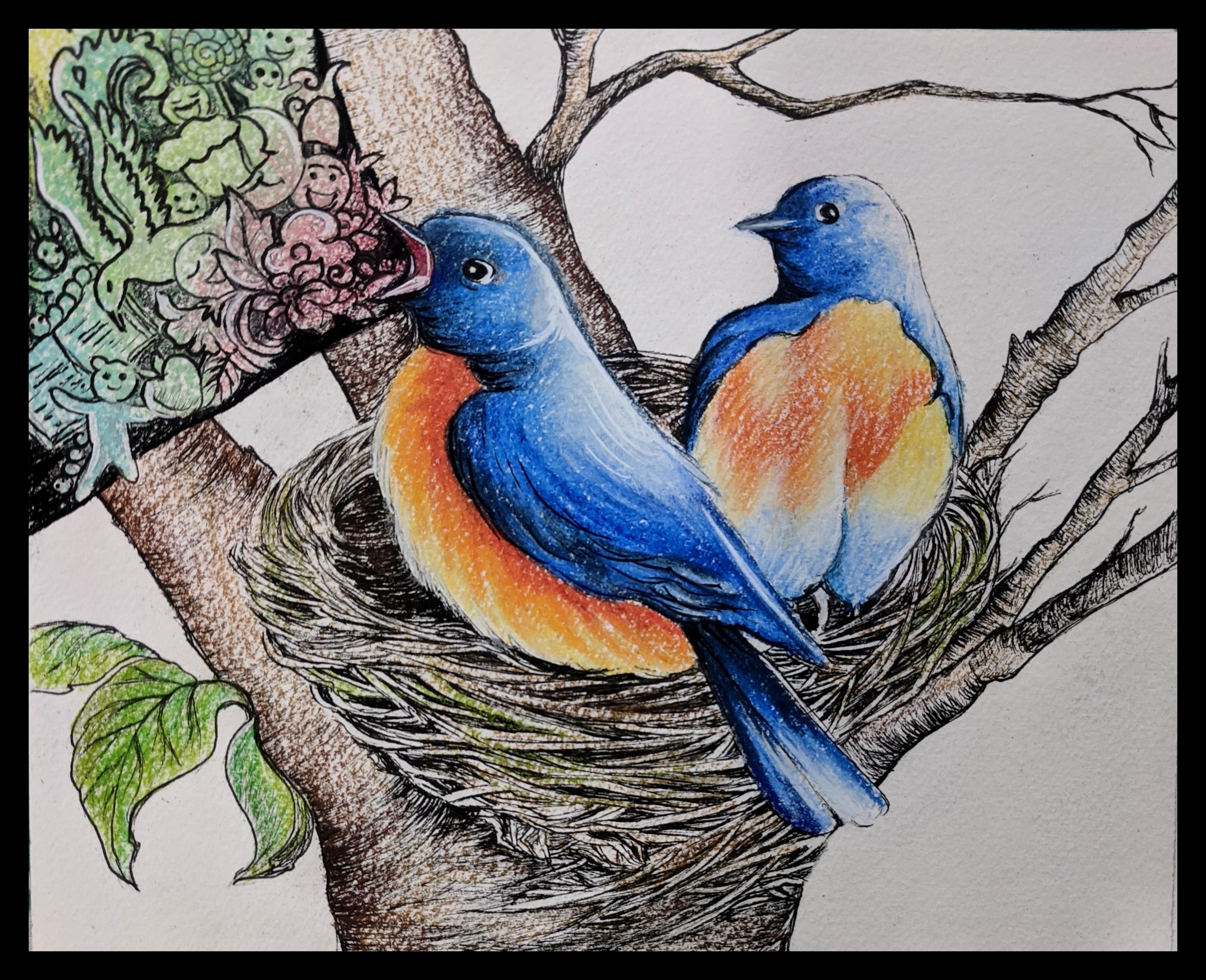We Actually Never Experience 'It'

IMAGE OF THE WEEK
We are grateful to Rupali Bhuva for offering this hand-made painting for this reading.

The "I" of the narrating mind is nothing more than a fictional but convenient construct used to organize all the separate conscious experiences occurring in the mind-system. Our very concept of Self is none other than this narrative "I", the center of gravity that holds the story together. Likewise the "it" is another imaginary construct of the narrating mind, a convenient fiction imputed to exist in order to link the different parts of the story together. The truth is we never actually experience any entity corresponding to "it". All that was experienced were the image, concept, hedonic feeling, and any emotion that arose in consciousness.
The narrating mind uses this "I-It" or "Self-Other" structure to organize the information coming from the many different sub-minds in a meaningful way. But the discriminating mind assumes the "I" and the "it" are actual entities, concretizing the Self-Other construct so it seems real and substantial. Thus, the narrating mind's fictional "I" becomes the discriminating mind's ego-Self, and the "it" is seen as the cause for the hedonic feelings and emotions that arise.
That fundamental mis-perception leads to the generation of intentions rooted in desire and aversion. In the example just given, those intentions might lead to grabbing binoculars to see the bird more clearly -- or to pursuing the bird, capturing the bird, buying another bird to keep in a cage, or even killing and stuffing the bird for future enjoyment! The earlier sequence of causally connected episodes gets extended: "I saw& it, I recognized it, I enjoyed it, I wanted it, I pursued it, I obtained it, and I enjoyed it again? Then of course, inevitably, "I lost it, and I grieved."
Drawing on stored information about past experiences and earlier narratives, the discriminating mind also further processes the output of the narrating mind, creating a personal history for the ego-Self, and a description of the world. In the future, perceptions and interpretations based on these complex constructs will trigger desire, aversion, and emotional reactions intended to protect and further enhance the ego-Self's well-being. The narrating mind then integrates those self-oriented thoughts and emotions into a whole new story. And this cyclical process of reinforcing the ego-Self goes on and on.
In summary, the narrating mind just combines separate conscious events from many different sub-minds into a story, which it projects back into consciousness. But our self-awareness -- that ongoing, intuitive sense of being a separate "self" in relationship with a world of objects -- comes from how the discriminating mind interprets those stories.
Culadasa has been a meditation teacher for decades. The excerpt above is from his book 'The Mind Illuminated'.
SEED QUESTIONS FOR REFLECTION: How do you relate to 'I' and 'it' as fictional useful constructs? Can you share a personal story of a time you became aware of the creation of desire and aversion from the misperception of the discriminating mind? What helps you break the cyclical process of reinforcing the ego-Self?